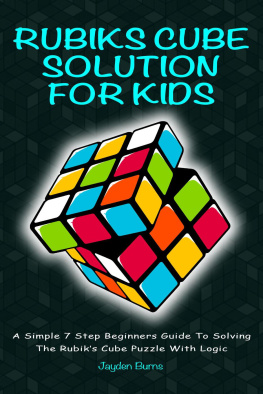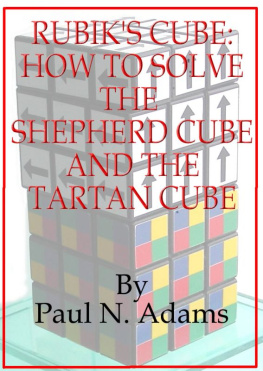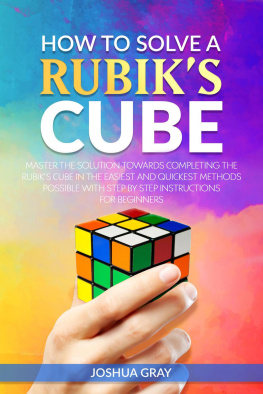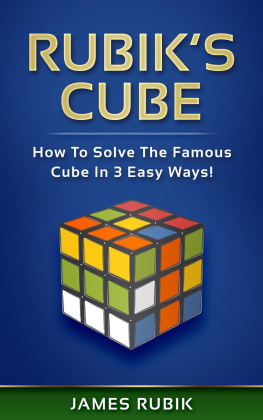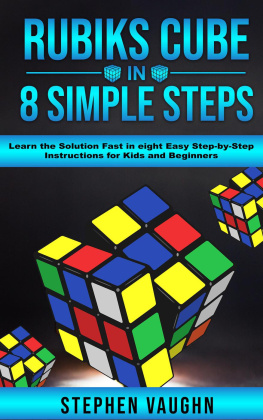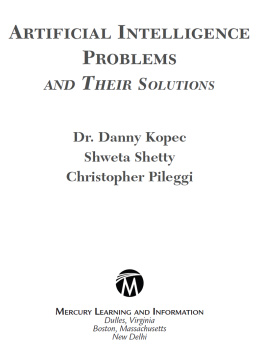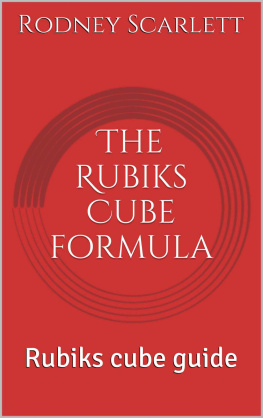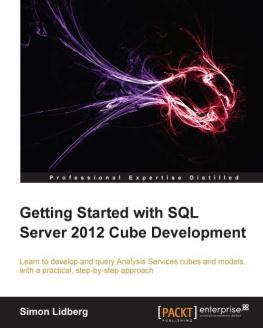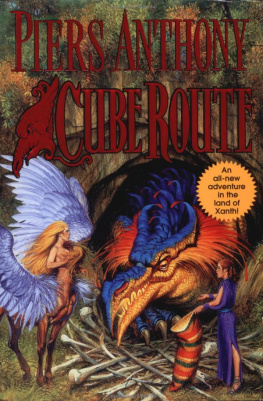Speedsolving the Rubiks Cube Solution Book For Kids
How to Solve the Rubiks Cube Faster for Beginners
David Goldman
Table of Contents
Copyright 2018 - All rights reserved.
It is not legal to reproduce, duplicate, or transmit any part of this document by either electronic means or in printed format. Recording of this publication is strictly prohibited and any storage of this document is not allowed unless with written permission from the publisher except for the use of brief quotations in a book review.
Introduction
Thank you for purchasing Speedsolving the Rubiks Cube Solution Book for Kids: How to Solve the Rubiks Cube Faster for Beginners.
You may have already purchased the first edition to the series Rubiks Cube Solution Book For Beginners: How to Solve the Rubiks Cube for Kids with Step-by-Step Instructions Made Easy and began your journey to solving the Rubiks Cube or you may already have an idea of how to solve the Rubiks Cube in your own way.
You may have become so good at solving the Rubiks Cube, your completion time is under 2 minutes every time. But you are still not satisfied. You now want more and are determined to shave those minutes into seconds because you have heard the world record time is under 5 seconds! In order to progress to faster solving times, you will need to learn new methods that effectively shortcut your way to solving the Rubiks Cube.
There are many different methods but the most popular among them and the one this book will be focusing on is the Fridrich method, also known as the CFOP method. I believe this is the best method to learn as it is the fastest and easiest approach to speed-solving the Rubiks cube for beginners. Most of the fastest speed-cubers in the world use the CFOP method or have used the CFOP method as the foundation to building their own intuitive method. These speed-cubers are able to solve the Rubiks Cube in an unbelievably short of amount of time, ranging from 4- 20 seconds.
The basis of this book is to take you through every step of the Fridrich model and help you solve the Rubiks Cube in faster times and to start your speed-cuber journey. The name CFOP originates from the steps it entails which are C ross, F 2L, O LL, and P LL.
- Cross meaning; solving the C ross
- F2L meaning; solving the F irst L ayers
- OLL meaning; O rientating the L ast L ayer
- PLL meaning; P ermutating the L ast L ayer
Learning and practicing this approach will definitely give you the building blocks to be on your way to the top with some impressive speed-solving times. However, full CFOP does take a lot of dedication to master. Please ensure you already have an understanding on how to solve the Rubiks Cube or you have read the first book of the series, Rubiks Cube Solution Book For Beginners: How to Solve the Rubiks Cube for Kids with Step-by-Step Instructions Made Easy before embarking on the advanced path. This book is for those already somewhat experienced in cube solving.
Chapter One Brief History on the CFOP Method
The Fridrich approach or the CFOP is one of the most common approaches when it comes to speed-solving the Rubiks Cube. It was first developed during the early 80s through combining different creative approaches by several speedcubers. One of them being Jessica Fridrich, who was then given the credit to make it popular and publishing it in 1997. The model utilizes a step by step system where solving a cross typically starts at the bottom, continued on by solving the first two layers. The next part is orienting the last layer and then permutating the last layer.
Basic layer through layer modes were some of the first models that were innovated during the craze in the 80s. There was a layer-based solution that was published in 1980 which first proposed the use of a cross. The big innovation of CFOP over the starter approaches was the use of the F2L. This allows for one to solve the first two layers in a simultaneous manner which enables the speed-cuber to solve the Rubiks Cube in a much faster time. Apparently, Jessica Fridrich did not play a role in inventing the particular F2L method and was using a basic layer method at the time.
The last layer steps OLL and PLL were Fridrichs main contributions to the overall CFOP method which enabled any last layer position to be solved in just only two algorithms which was much faster than any other last layer method.
Speedcubing was initially forgotten after the championships in 1982 on a competitive level. There was not another competition until 2003 and only 4 of the original 19 competitors in 1982 competed again. Nowadays, speedcubing competitions have changed a bit from what they were back in the 80s. For example, competitors now have the permission to utilize their own puzzles. Competitors have five attempts at solving the Rubiks Cube and then an average of the best three is taken and the worst times are shaved. There are also presently 18 total events with different restrictions and challenges to each course.
I wont bore you with anymore history facts, lets get stuck into learning how to solve the Rubiks Cube fast!
Chapter Two: Stage 1 Solving The Cross
If you have already read the first edition to the series Rubiks Cube Solution Book For Beginners: How to Solve the Rubiks Cube for Kids with Step-by-Step Instructions Made Easy you will be somewhat familiar with this step as Solving the White Cross is the first Stage in the first book to the series. However, in this book the step is not exactly the same. In my previous book we would solve the white cross from the top face to make things simple and so we could see exactly what we were doing whist solving the cross. In this book, we will be solving the white cross on the bottom face instead of the top face which makes things a little more difficult as we cannot exactly see what is going on. It will be awkward the first few times you try it, however, after a while it is definitely going to be worth your while. By not turning the Rubiks Cube following completion of the first stage allows for saved time resulting in a quicker record time at the end of the solved Cube.
Solving the cross on the bottom is not going to be natural when starting because of the fact that you do not see particular progress while solving the cross. The other disadvantage of solving the cross from the bottom is it is harder to recognize if you make a mistake whilst trying to solve the cross, which will cost a lot of time when you need to correct the mistake you made. This is why it will require a lot of practice, as it will initially take more time than it would by solving it on the top. After some practice, muscle memory will kick in and make it much easier. When you are starting out, do not be afraid to check the bottom of the cube whilst you solve the cross from the bottom face to confirm you are making the correct rotations. Obviously after some time you will need to remove the habit of checking the cube as you solve the cross as this will eat into your record time.
It is important to note, that whilst solving the cross, most advanced speed-cubers will not be restricted to only solving for the white cross. As per the World Cube Association Regulation A3a1, in speed-solving competitions, the contender has the privilege to pre-review the cube for a period of 15 seconds before they attempt to solve the Rubiks Cube. In those 15 seconds, if they see a better (quicker) opportunity to solve the cross in the red color for example, as they can recognize it will require less moves, then that will be their chosen color. This can have a significant advantage on opponents.



